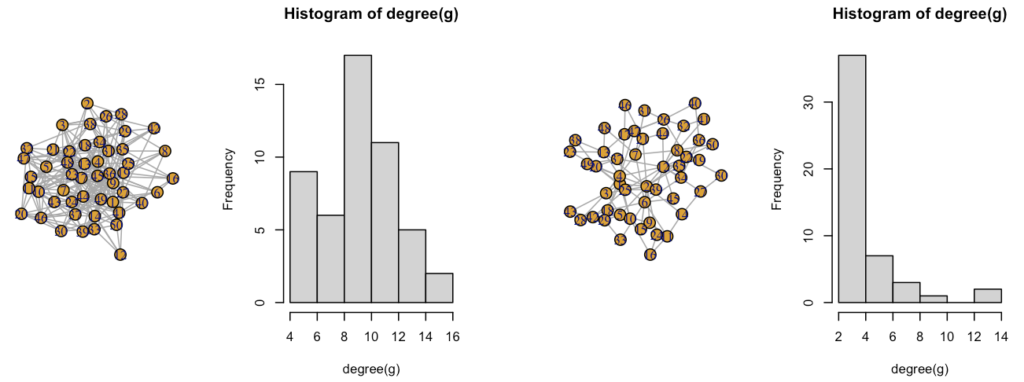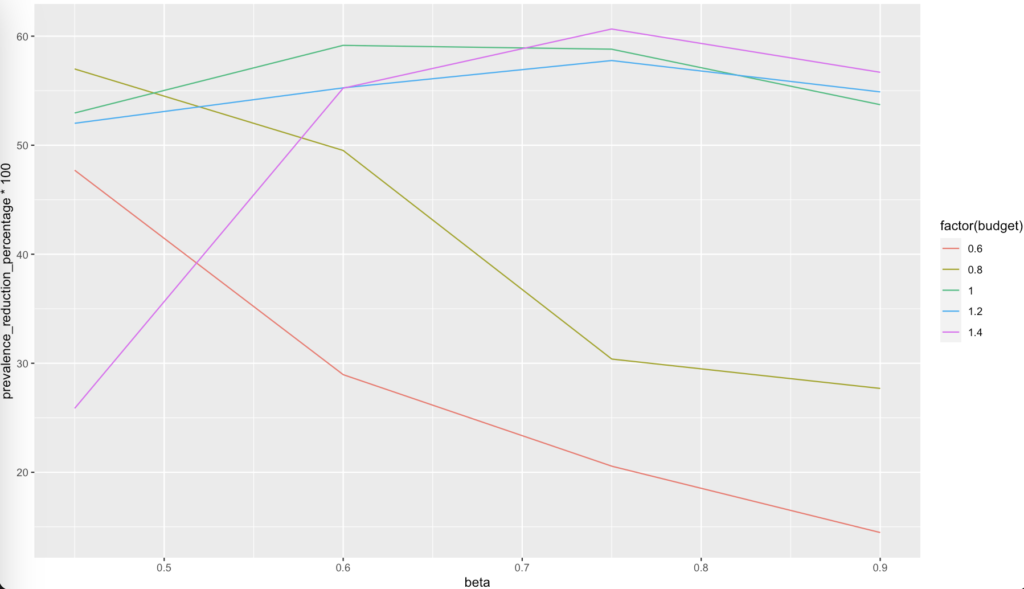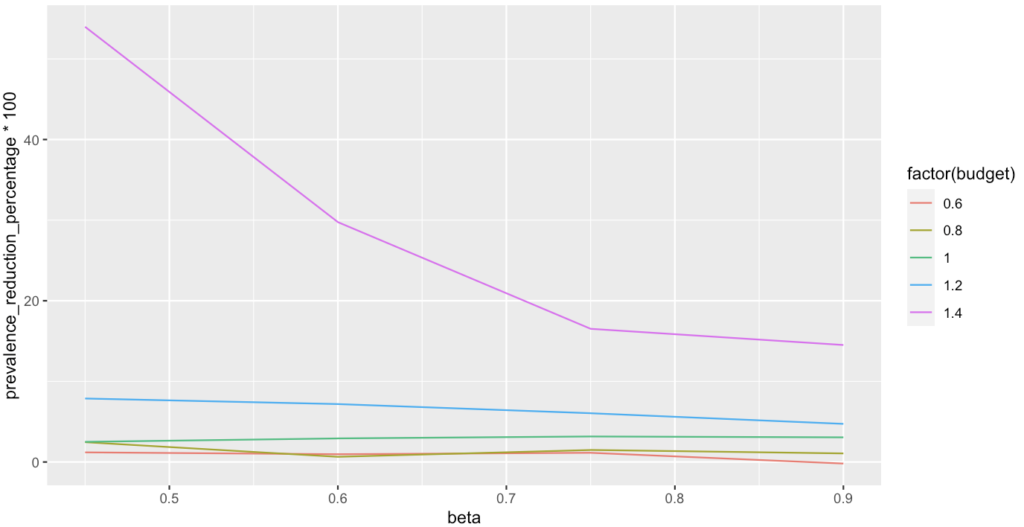This week-end I was focusing on a Scale-Free network to try and choose better parameters for the efficacy/efficiency (both) of the Genetic Algorithm.
The idea behind choosing such a network was to see if it would help to have a network with few highly connected vertices.
And it worked!
Comparing with random network

Above – On the left: a random network (generated with igraph, Erdös-Renyi) with its nodes degrees. On the right: a scale-free network of the same size and the respective degrees (Barabasí-Albert).
So I got to good results, where my computer chose to spend a given budget on improving certain nodes, which is relevant when you have limited budget. In a Scale-Free (BA) network of 50 nodes, I managed gains of > 40% (or more!) reduction of infection prevalence, compared to randomly assigning a given budget (unless limited budget against a very aggressive virus, you can only get so much improvement…):

There was a clear correlation with centrality measures: if you were to reduce risk of infection for a few nodes, make sure you protect those that connect different parts of the network the most (high betweenness), or those that talk to more neighbours (higher degrees), etc. (Eigen centrality was the most clearly correlated measure overall, followed closely by Page-Rank).
This also meant… On a random network, somewhat nearer a regular network, it’s hard to choose which nodes to protect (not to mention, which “protection” measure, in our case: reduce beta or increased mu).
And indeed, my computer hardly managed gains of 5-10% infection prevalence reduction (compared to random budget assignation), vs the 40% above, and that was only for twice as much budget! (Well, unless you have high budget and the infection is not to aggressive to begin with…):

Takeaway?
Well, although it is a far cry from a big surprise (I have hinted to such ideas in the past), choosing between nodes when they’re all the same makes little difference… And so the structure or “topology” of the network has a direct impact on the efficacy of spread-controlling measures such as the ones I’m playing with (higher resistance to infection and faster detection/cleanup).
This is important because it affects the value of the exercise of course, but also it reminds me a bit of ideas such as entropy & work, chaos and control… “Structure and order is easier to manage”, could be the title for today…
Which is great, although on the other hand, I am very interested lately in the ideas of antifragility, complexity and chaos as a source of resilience… So I guess it’s never all black and white, hu?